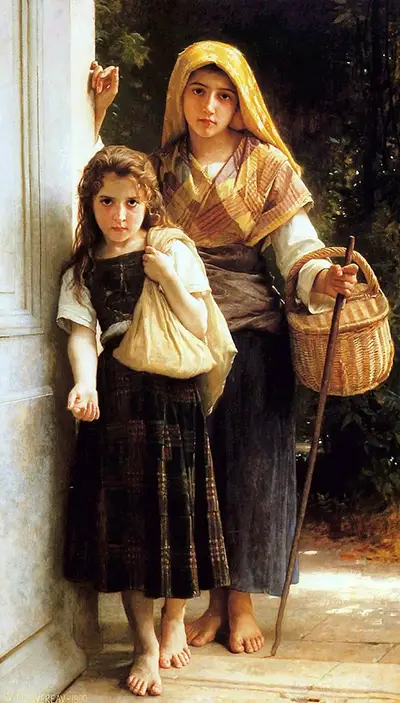 Buy Art Prints Now
Buy Art Prints Nowfrom Amazon
* As an Amazon Associate, and partner with Google Adsense and Ezoic, I earn from qualifying purchases.
Little Beggars, or Petites mendiantes to give it its original French title, was painted by William-Adolphe Bouguereau in 1890
At this time Bouguereau's career was in full swing, attending multiple exhibitions of his work both at home and abroad. He had also, for example, just been nominated for membership of the Royal Academy of Fine Arts in neighbouring Belgium. This particular painting was to be exhibited at the Palais de l'Industrie alongside The Holy Women at the Tomb.
The artist had a major following of patrons by this stage of his career and would have little difficulty in selling any of his major works from these public displays. This relatively safe type of traditional art would vary in popularity over the decades since, sometimes viewed as unimaginative, others as technically impressive.
We don't know a huge amount about this painting, but we do know that it was initiated in La Rochelle, Bouguereau's long time home. We also know that the other painting was received in more glowing terms that this one, but both were considered worthy additions to this artist's career. Much research has been completed on this artist's life and considerable correspondence has been uncovered concerning his letters with other dealers and patrons of the arts.
The work of this artist is spread all across the world, with plenty now in North America but most still remaining in Europe. There is a healthy mix of private collections and national institutions that hold his work, so most people who live in France or in a neighbouring country should be able to see some of his work relatively easily.
This particular painting is classically Bouguereau, with young girls dressed in relatively modest, traditional clothing carrying out everyday tasks. The models used here appear in several other paintings by this artist who clearly appreciated elements of their appearance and found it suitable to his style.




